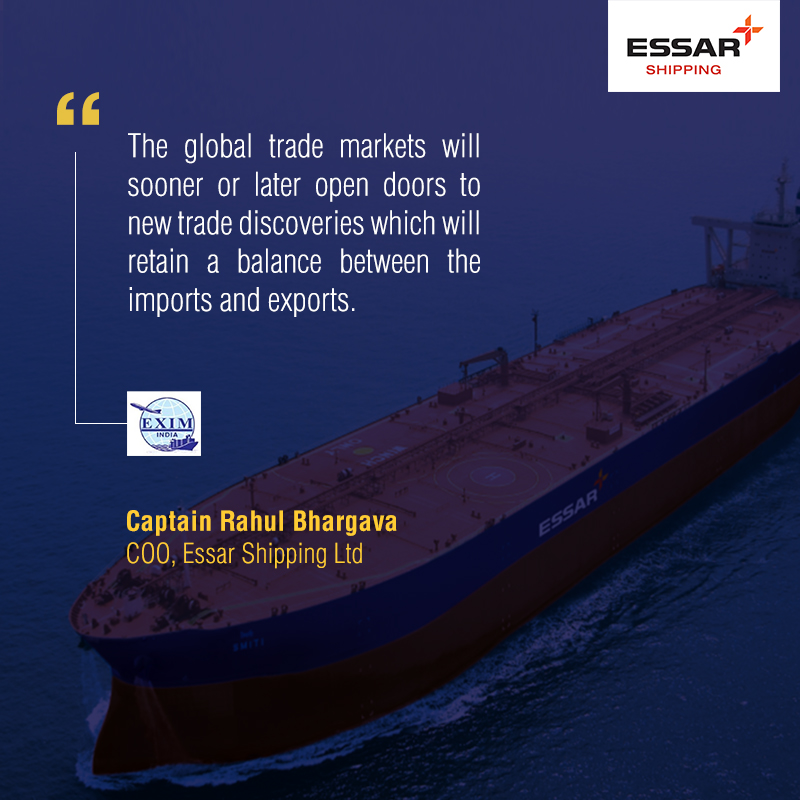Exim India

The shipping industry had to navigate choppy waters in 2020. Like every other realm of business, or indeed life, it too had to bear the toll exacted by the economy-sapping effects of the Covid-19 pandemic.
Shipping is a vital cog that keeps the wheels of economic growth turning. From the transport of raw materials and sources of energy to the export and import of finished goods, the world turns on trade. It’s inevitable, then, that the ripples of any economic slowdown would be felt by the shipping sector. The United Nations Conference on Trade and Development (UNCTAD), in a report published in November, estimated that global maritime trade would plunge by 4.1 per cent this year.
Global slump
As bruising as it is, that’s not surprising given economic activity didn’t just slow down but in fact ground to a complete halt. It was an unprecedented scenario, something that we as businesses, as governments, as individuals, had never experienced before. It was something that at the time we couldn’t possibly have foreseen. Its impact reverberated around the world, so much so that the uncertainties that loomed in the early days of the pandemic, the uncertainties that still cloud the way ahead, made the financial fallout of Lehman Brothers’ 2008 collapse seem tame in comparison.
The novel Coronavirus first emerged in China in November 2019. For some months it seemed like a localised threat. The gravity of it however started to become evident around late December and January when Chinese authorities locked Wuhan down completely in the build up to the Chinese New Year holidays. An entire city sealed off. This had to be serious but it only really hit home in February when the entire country was closed off. That is when the shipping industry really began to feel Covid-19’s impact.
China is one of the biggest engines of global economic growth. With the country in lockdown, demand collapsed. Suddenly China wasn’t importing as much as it used to because it wasn’t consuming as much as it used to amid the shutdown. On the flip side, as the world’s factory, with manufacturing idled, the country wasn’t producing any more either, which meant it wasn’t importing the raw materials that it used to, nor was it shipping out the finished goods it used to. Freight rates and charter rates plummeted as a result. Supply chains are in disarray. Large crude tankers and bulkers, VLCCs and Capesize have been among the categories that have been most badly hit.
Improving outlook
Still, things are getting better. There is light at the end of the tunnel. The outlook is, if not bright, certainly not as grim as it had looked back in February. The world is learning to live with the virus. Countries keep locking down and unlocking their economies but their impacts are relatively short term.
The Chinese economic engine is back firing on all cylinders again and, a bright spot for large oil tankers, the fall in crude oil prices will spur demand. Nevertheless, oil demand will still be drastically lower in 2020 than it was the year before. No matter, that should still serve large oil carriers well as they are chartered out as storage for excess produced oil. Also, in view of the current scenario, we certainly expect the shipping industry to witness a noteworthy change in 2021 with shift from China to other uncharted territories. Many countries are already on the lookout for newer markets and moving their base from China to other South-East Asian countries like Vietnam, Laos, Thailand, etc. The global trade markets will sooner or later open doors to new trade discoveries which will retain a balance between the imports and exports.
So, yes, things are getting better. Much, however, will depend on Sino-US trade relations which had disrupted trade flows much before the novel Corona virus came along. So, we still have some stormy weather to navigate but the shipping industry is nothing if not resilient.
Source: Exim India